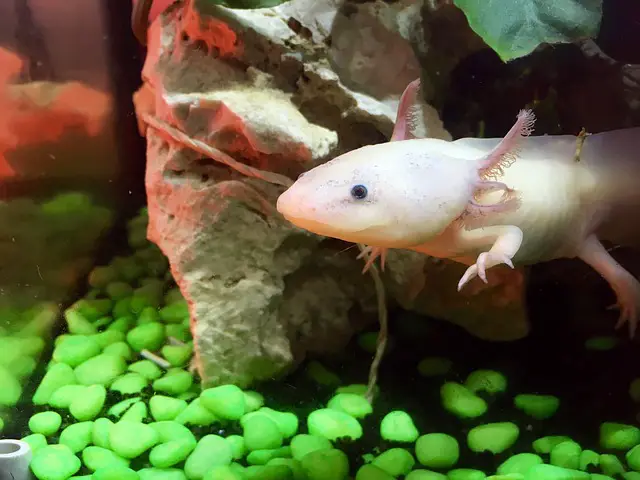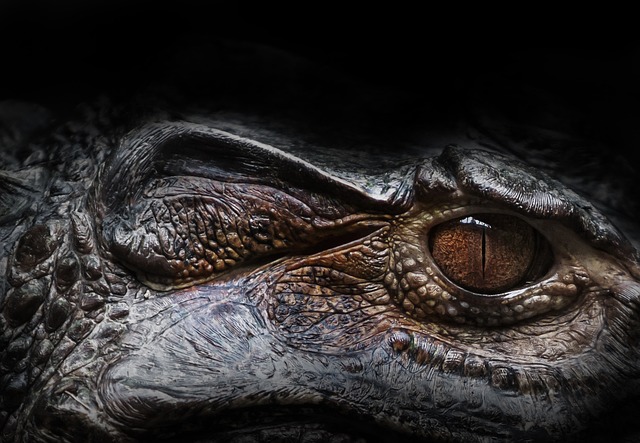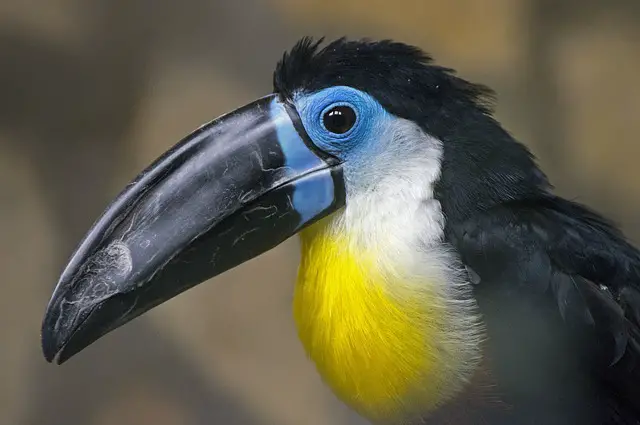Axolotls are a type of salamander, specifically a neotenic salamander
. Neoteny is a process where an animal retains its juvenile characteristics into adulthood.
In the case of axolotls, they retain their gills and aquatic lifestyle instead of undergoing metamorphosis into a fully terrestrial adult salamander.
However, under certain conditions, such as a lack of food or a change in water quality, axolotls may undergo metamorphosis and become fully terrestrial salamanders.
This process is rare in captivity and more common in the wild.
Axolotls and Salamanders: A Basic Understanding
Axolotls and salamanders are often confused with each other due to their similar appearances. However, there are a few key differences between the two.
Axolotls are a type of salamander that are native to Mexico. They are known for their unique ability to regenerate lost body parts, including limbs, spinal cord, and even parts of their brain.
Axolotls are fully aquatic and never undergo metamorphosis, which means they remain in their larval form throughout their lives.
Salamanders, on the other hand, are a diverse group of amphibians that can be found worldwide.
Unlike axolotls, most salamanders undergo metamorphosis, transitioning from their aquatic larval form to a terrestrial adult form.
Salamanders also have a wider range of habitats, including forests, deserts, and even underground.
Despite these differences, axolotls and salamanders are closely related and share many similarities. Both are cold-blooded, have slimy skin, and breathe through gills when in their larval form.
They are also both popular pets and are often kept in home aquariums.
While axolotls and salamanders may look similar, they are distinct creatures with unique characteristics and habitats.
The Metamorphosis Process
Axolotls are known for their ability to regenerate lost body parts, but they are also famous for their unique ability to remain in their larval form throughout their entire life.
However, axolotls can undergo metamorphosis under certain conditions and transform into salamanders.
The metamorphosis process is initiated by the release of thyroid hormones in response to environmental cues such as temperature, water quality, and availability of food.
These hormones trigger a series of physiological changes that cause the axolotl to lose its gills, develop lungs, and grow limbs.
During metamorphosis, the axolotl’s skin becomes dry and rough, and its tail becomes shorter and thicker. The eyes become larger and more prominent, and the coloration of the skin changes from a dull brown to a vibrant green or yellow.
The duration of the metamorphosis process can vary depending on the environmental conditions and the age of the axolotl. It typically takes several weeks to months for an axolotl to complete the metamorphosis process and become a salamander.
It is important to note that not all axolotls can undergo metamorphosis, and forcing an axolotl to undergo change can be stressful and harmful to the animal.
Therefore, it is recommended to provide axolotls with optimal living conditions to ensure their health and well-being.
Factors Influencing Axolotl Metamorphosis
Environmental Conditions
Axolotls can undergo metamorphosis but only do so under certain conditions. One of the most important factors is the environment they are in.
Axolotls are aquatic animals and require water to survive. However, they also need specific water conditions to trigger metamorphosis.
The water temperature plays a crucial role in the metamorphosis process. Studies have shown that axolotls only undergo metamorphosis when the water temperature is between 20 and 25 degrees Celsius. If the water is too cold or too warm, the axolotls will not metamorphose.
Another critical factor is the presence of iodine in the water. Iodine is essential for developing the thyroid gland, which produces hormones that trigger metamorphosis. Without iodine, the axolotls will not be able to undergo metamorphosis.
Genetic Factors
Genetics also plays a role in axolotl metamorphosis. Some axolotls are genetically predisposed to undergo metamorphosis, while others are not.
One gene that has been identified as being important in the metamorphosis process is the thyroid hormone receptor beta (TRβ) gene.
This gene produces a protein involved in the thyroid hormone signaling pathway. If this gene is mutated or absent, the axolotl cannot metamorphose.
Another gene implicated in metamorphosis is the prolactin receptor (Prlr) gene. This gene is responsible for producing a protein that is involved in the regulation of thyroid hormone levels.
If this gene is mutated or absent, the axolotl cannot undergo metamorphosis.
In conclusion, axolotls can undergo metamorphosis only under specific environmental conditions and genetic factors.
The water temperature and the presence of iodine are essential for triggering metamorphosis, while genes such as TRβ and Prlr are essential for the metamorphosis process.
Implications of Axolotl Metamorphosis
Health Impacts
Axolotls are known for their remarkable regenerative abilities, and they are often used in scientific research to study tissue regeneration and wound healing. However, when an axolotl undergoes metamorphosis, it may experience significant changes in its health and overall well-being.
During metamorphosis, axolotls undergo a series of physiological changes, including the loss of gills and the development of lungs. These changes can significantly strain the axolotl’s body, and it may experience a range of health issues as a result.
Some of the most common health issues that axolotls may experience during metamorphosis include respiratory, digestive, and skin problems. Poor water quality, inadequate nutrition, and other environmental factors can exacerbate these health issues.
Life Span Changes
In addition to the potential health impacts of metamorphosis, axolotls may also experience changes in their life span. While axolotls are known for their longevity, with some individuals living up to 15 years in captivity, metamorphosis may shorten their lifespan.
This is because the physiological changes that occur during metamorphosis can significantly strain the axolotl’s body, and it may be more susceptible to disease and other health issues.
The stress of metamorphosis can also impact the axolotl’s immune system, making it more vulnerable to infections and other health problems.
While axolotl metamorphosis is a fascinating process that has significant implications for scientific research, it is essential to consider the potential health impacts and lifespan changes that may occur.
Providing axolotls with proper care and monitoring their health closely during metamorphosis may mitigate some of these risks and ensure they can live long healthy lives.
Scientific Studies and Research
Scientists have conducted various studies and research to understand the process of axolotls transforming into salamanders. One study by the University of Kentucky showed that axolotls can be induced to undergo metamorphosis by administering thyroid hormone. This hormone is responsible for initiating the process of metamorphosis in amphibians.
Another study conducted by the University of California, Berkeley, showed that the process of metamorphosis in axolotls is regulated by a gene called THRB. This gene is responsible for producing thyroid hormone receptors necessary to initiate metamorphosis.
In addition, researchers at the University of Paris have shown that axolotls can be induced to undergo metamorphosis by exposure to environmental cues such as temperature, light, and food availability. These cues can trigger the production of thyroid hormones and initiate the process of metamorphosis.
Overall, these studies suggest that axolotls have the potential to transform into salamanders through various mechanisms, including the administration of thyroid hormone, regulation by the THRB gene, and exposure to environmental cues. Further research is needed to fully understand the metamorphosis process in axolotls and develop effective methods for inducing this transformation.
Conclusion
In conclusion, axolotls can become salamanders, but it is not natural. It requires specific environmental conditions and hormonal treatments to trigger the metamorphosis. While axolotls are known for their ability to regenerate lost body parts, they are also popular as pets and laboratory animals due to their unique characteristics.
However, it is essential to note that axolotls are endangered in the wild due to habitat destruction and pollution. Therefore, conservation efforts are necessary to protect their natural habitats and prevent extinction.
Whether axolotls can become salamanders is not a simple yes or no answer. It depends on the context and purpose of the question. Nevertheless, axolotls can thrive as both axolotls and salamanders in captivity with proper care and attention.




